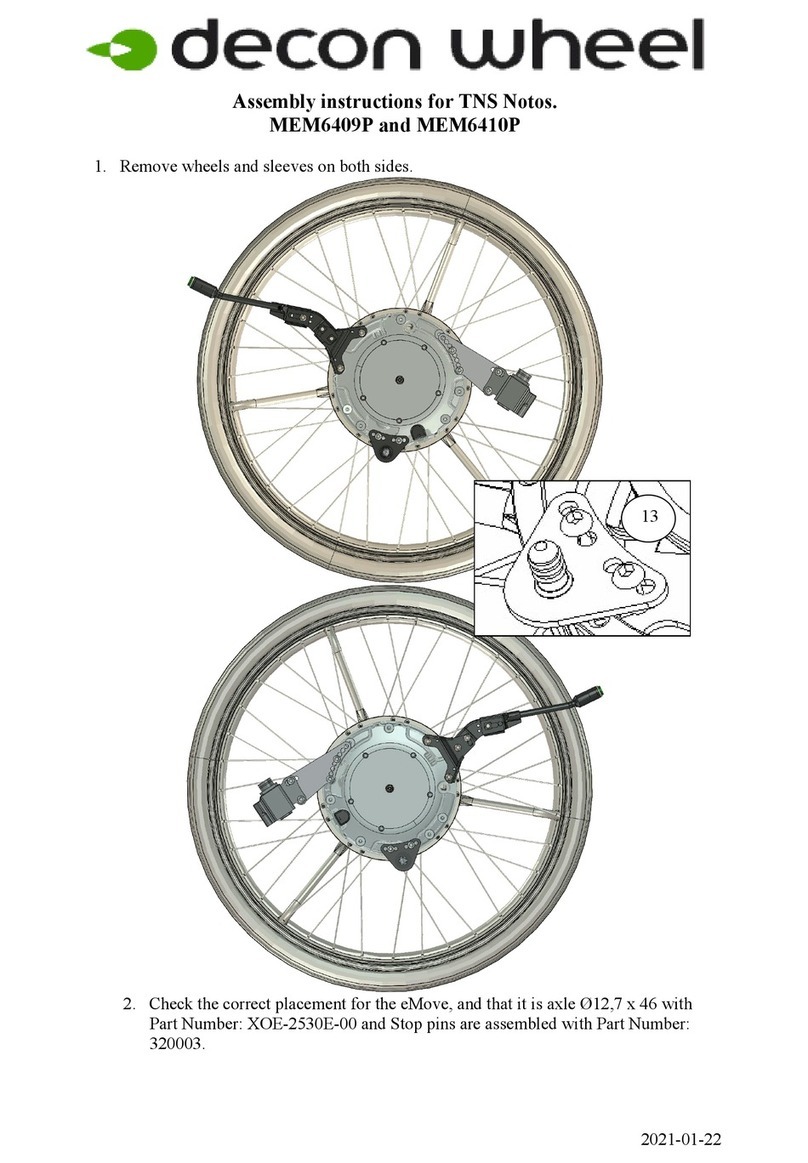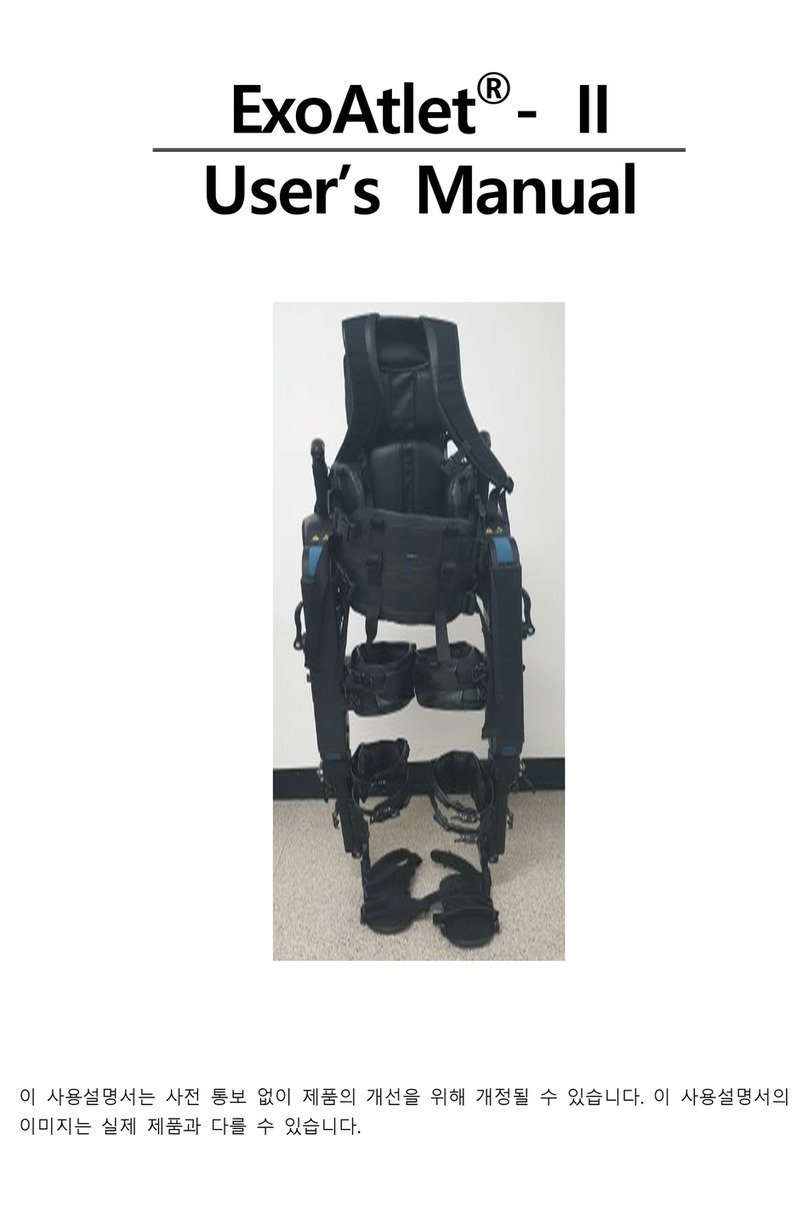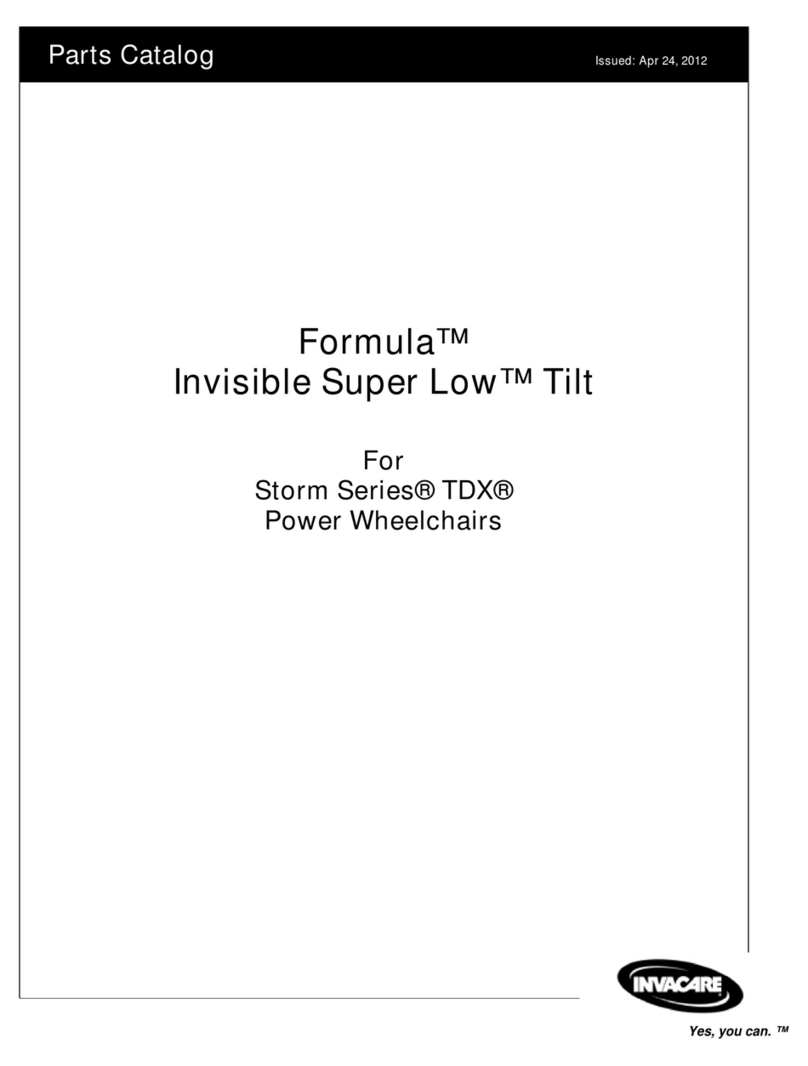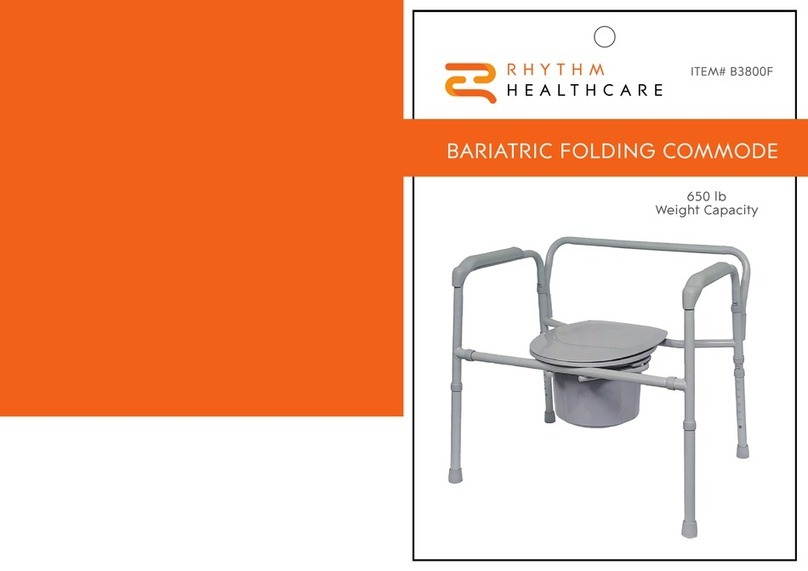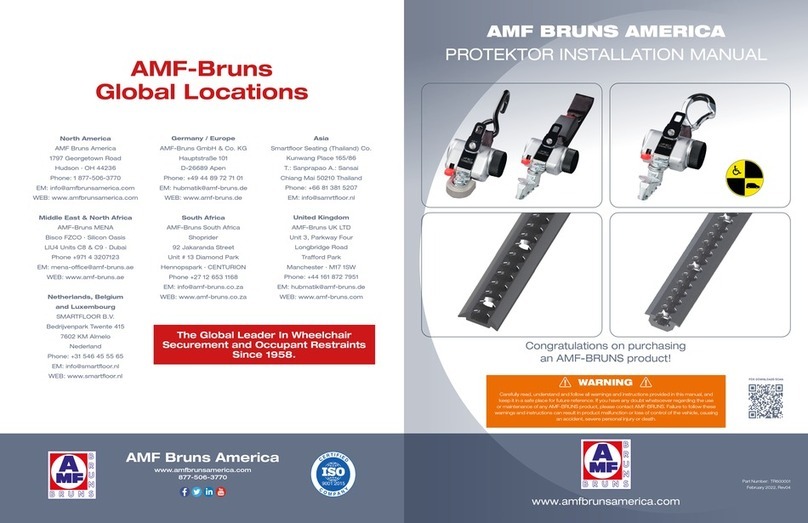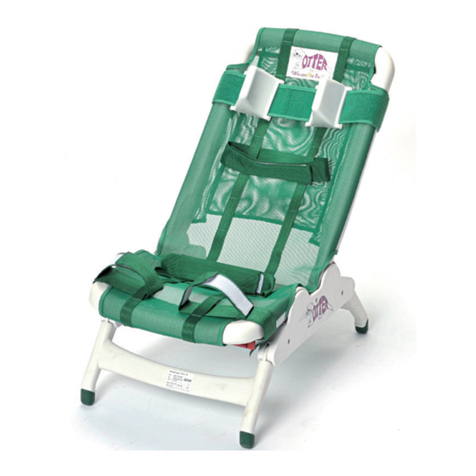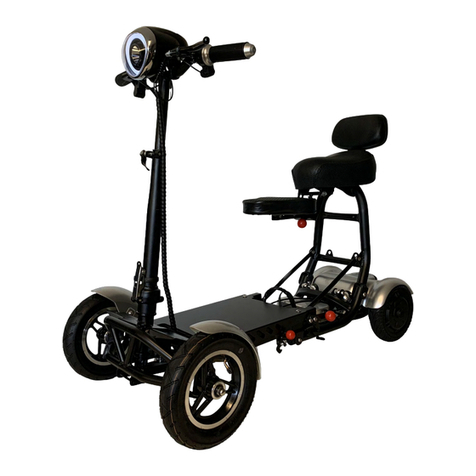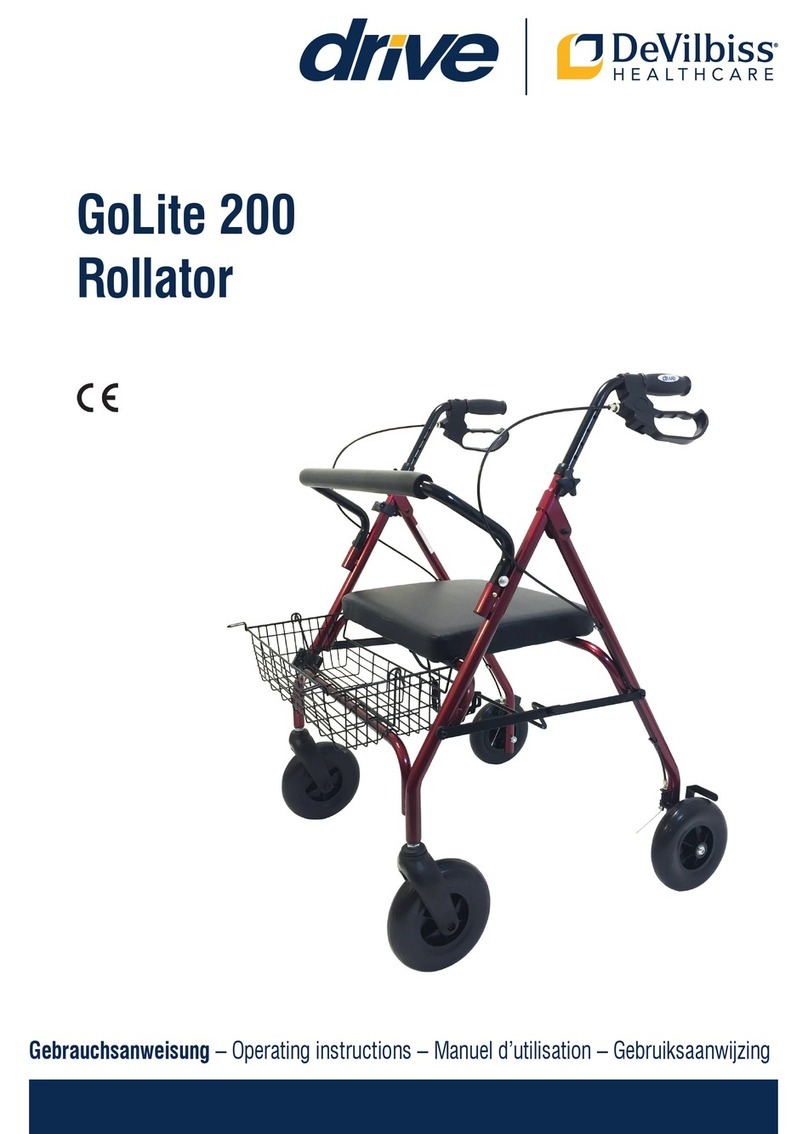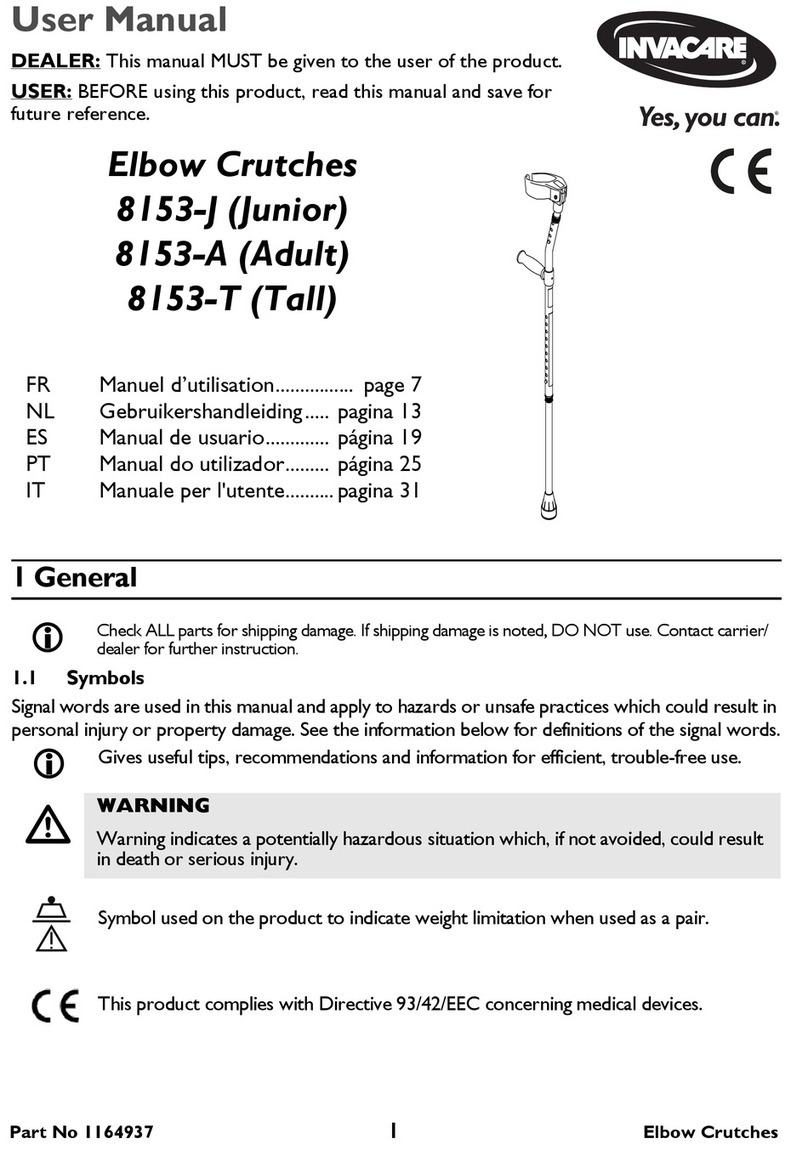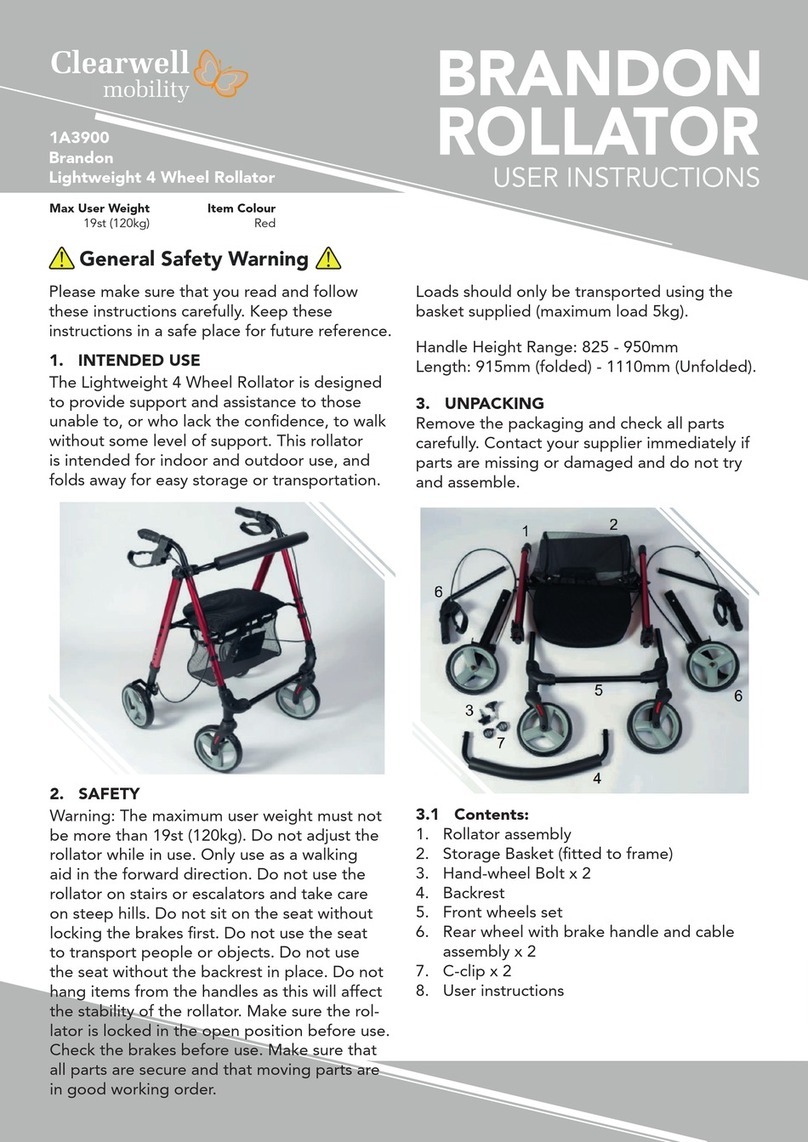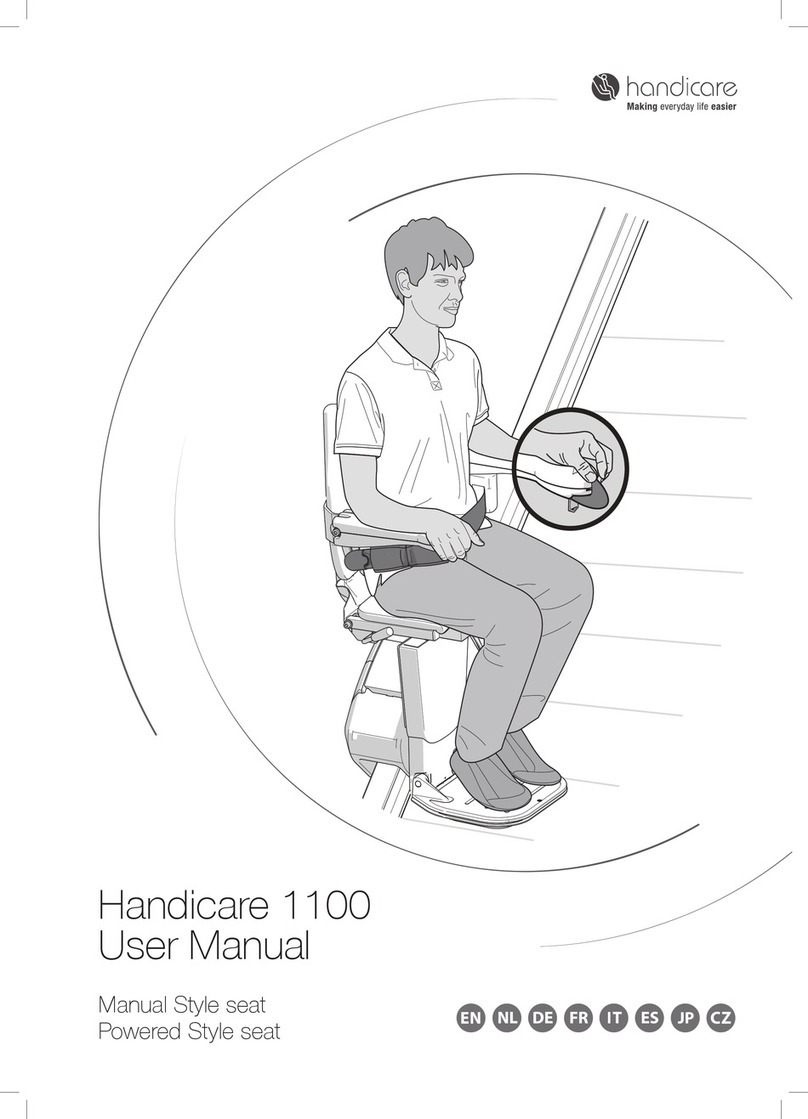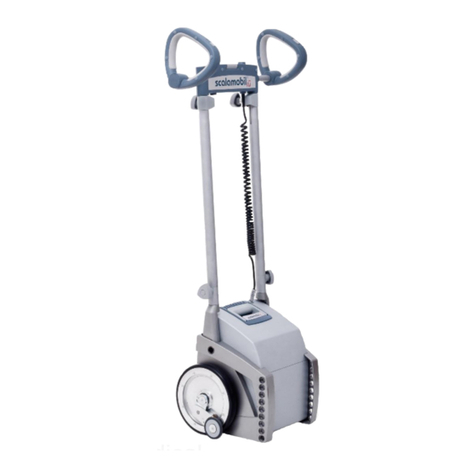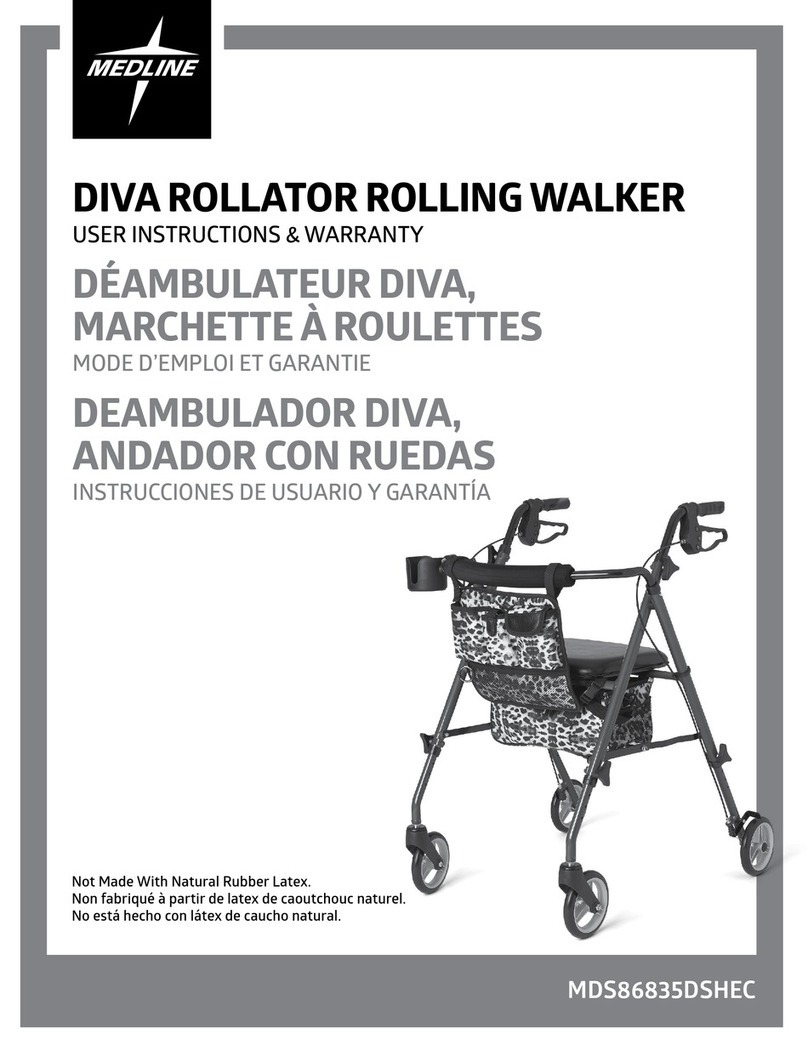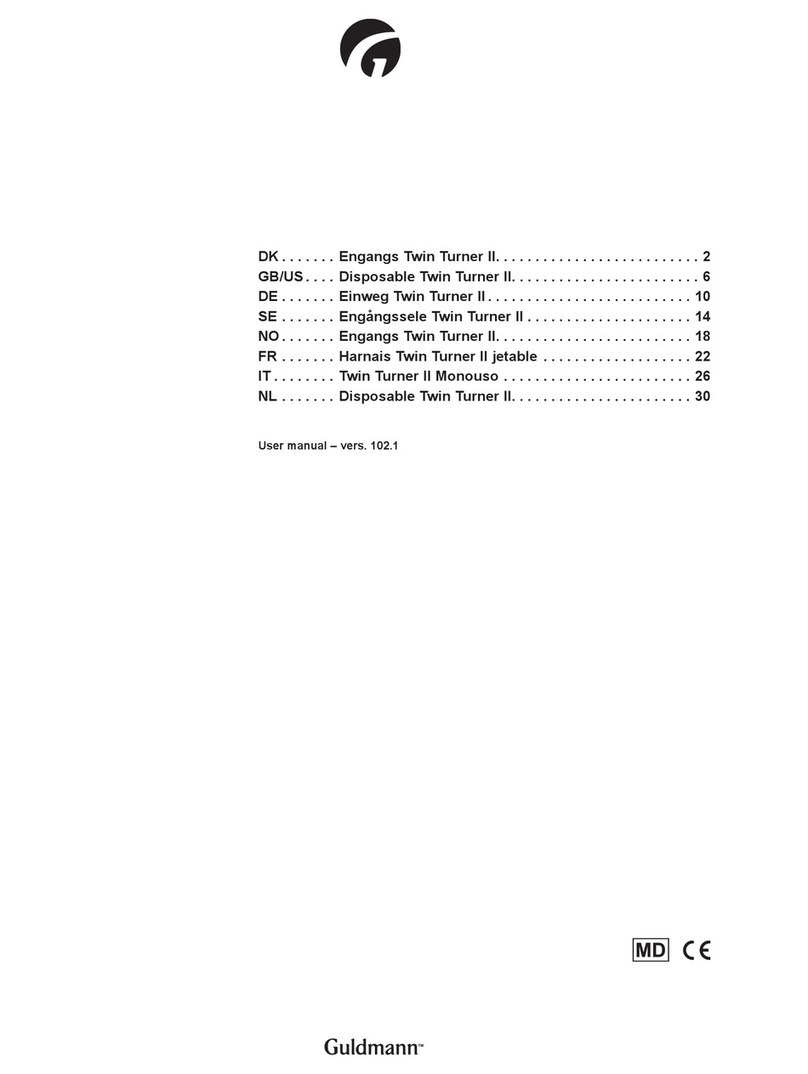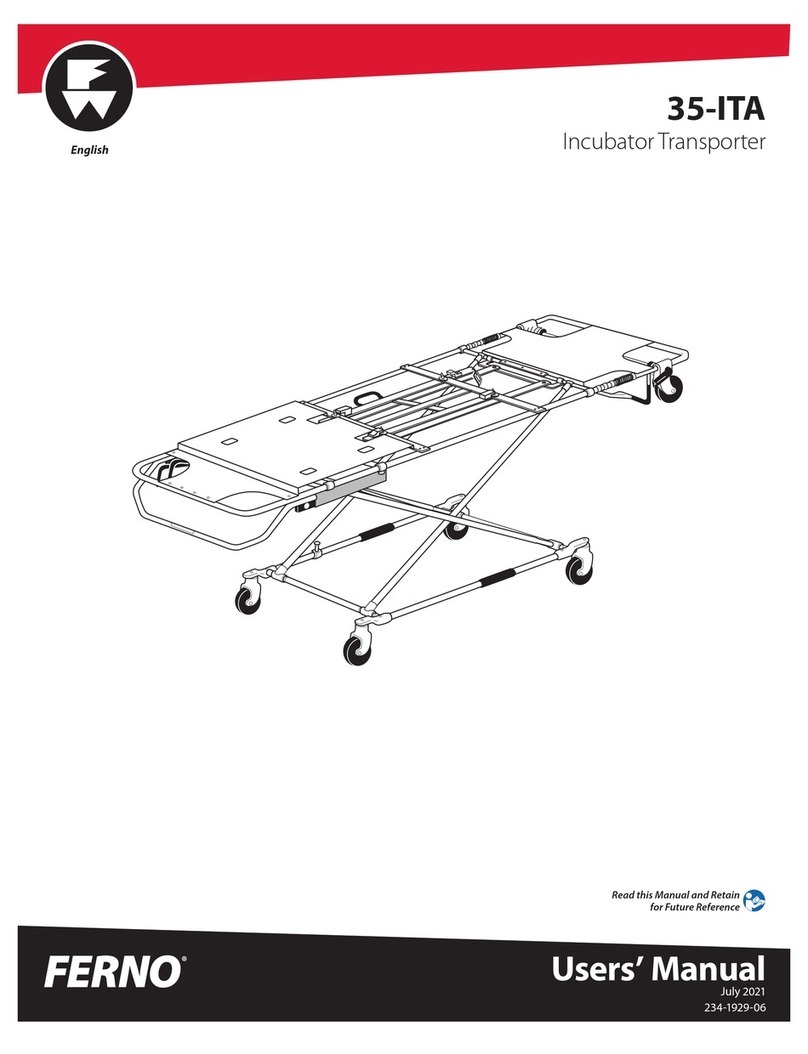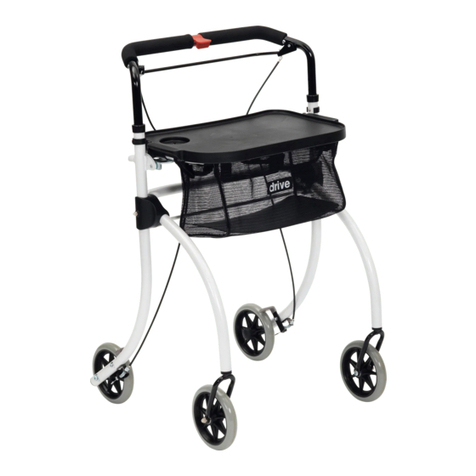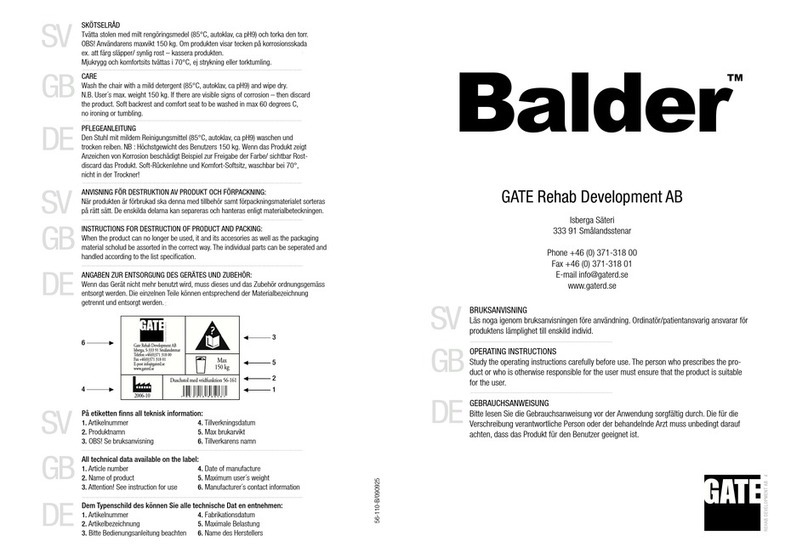
2. Safety Instructions
6
Avoid Riding in These Conditions Unless Accompanied by a
Caretaker
- Riding in inclement weather such as rain, heavy fog, strong winds,
snow, etc. If your scooter gets wet, electronic functions may be dam-
aged so please wipe off all water immediately.
- Riding in sub optimal conditions such as muddy areas, trails, sand,
gravel, etc.
- Riding in crowded areas, riding on unfenced roads, near ditches,
near bodies of water, or near any other dangerous areas.
- Riding over railroad tracks. If you must cross a railroad track, inspect
the tracks to confirm it is safe to cross. Turn the scooter off and disen-
gage the wheels from the motor so that you or your caregiver can
freely push the scooter across the tracks. Cross at an angle that en-
sures your tires will not get stuck in the track.
- Carrying people or cargo. This electric scooter is designed to be
used by only one person. It is not designed to carry additional people
or cargo.
Precautions for Uphill and Downhill
-Avoid riding on steep hills, uneven surfaces, high steps, channels or
any other steep areas.
- Avoid riding on steep slopes, the slope range should be less than 9
degrees.
- If possible, please keep the scooter moving forward during uphill
climbs. It may be difficult to restart an uphill climb from a stand still.
- Use slow speeds during downhill descent.
- Avoid driving sideways on steep areas.
- Avoid riding on or nearby stairs.
- Avoid crossing ditches.
- If you must cross a ditch, try to cross at a 90° angle.
Do not set the scooter to manual mode during uphill or
downhill use. If the scooter malfunctions at traffic crossing,
please immediately ask passersby for help. Set scooter to
manual mode by disengaging the wheels from the motor, then push
scooter to a safe location.
